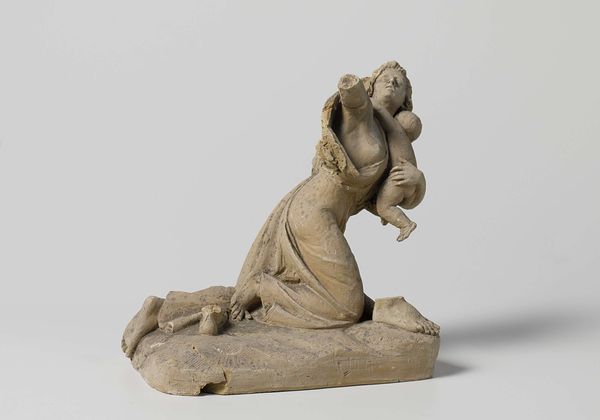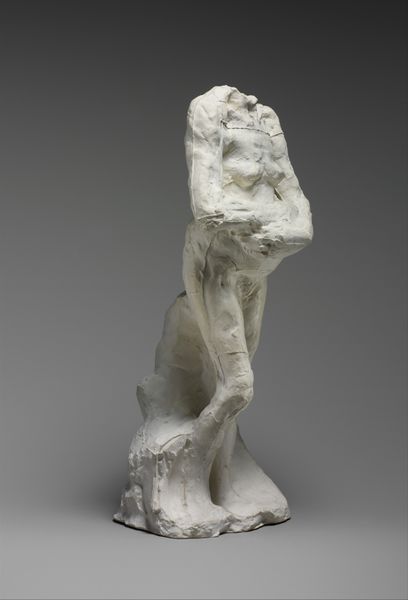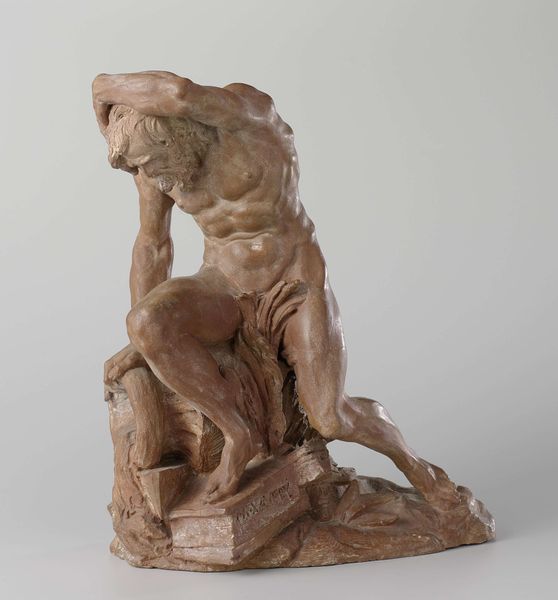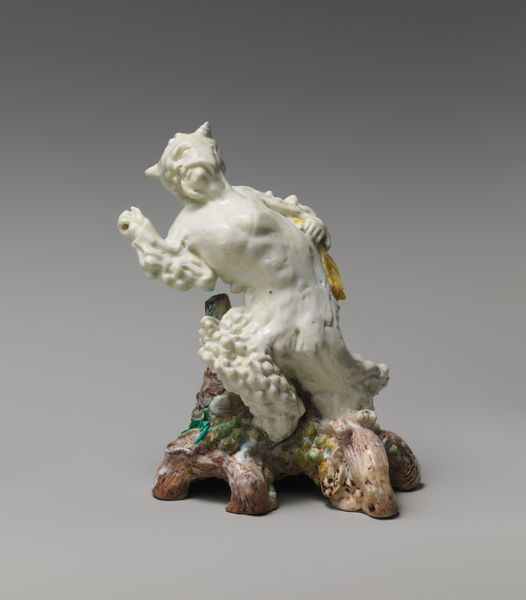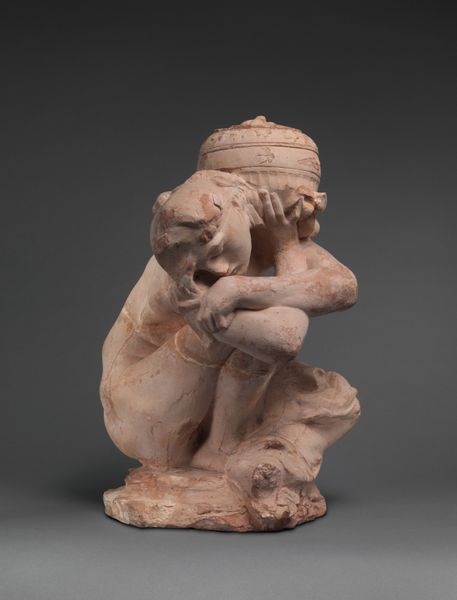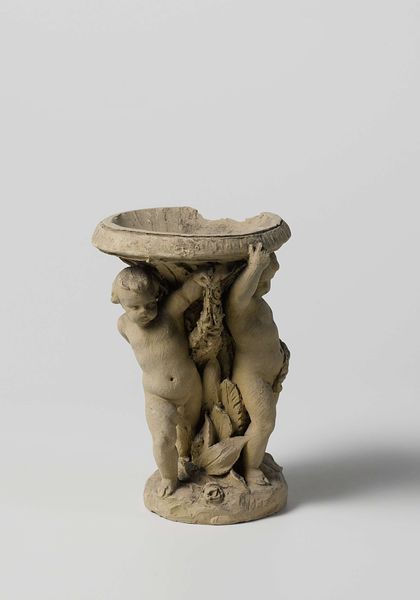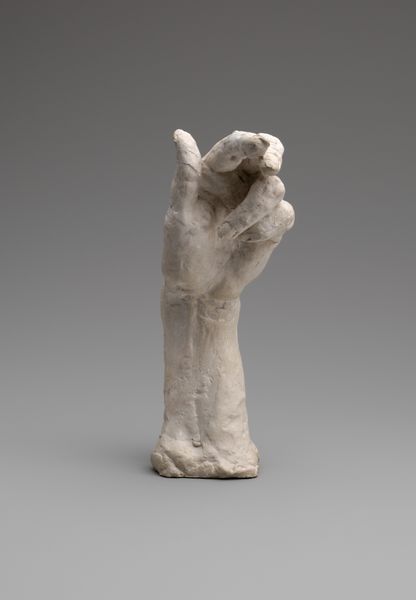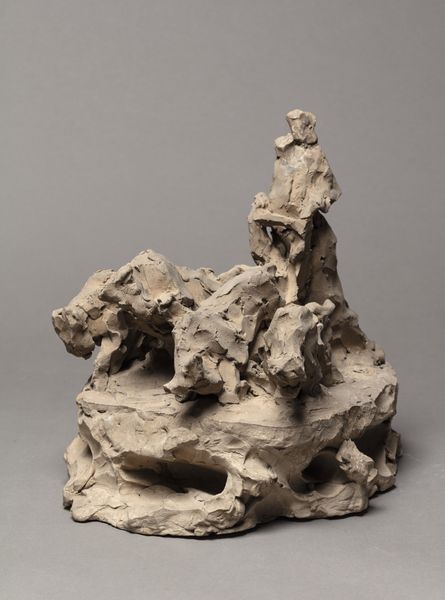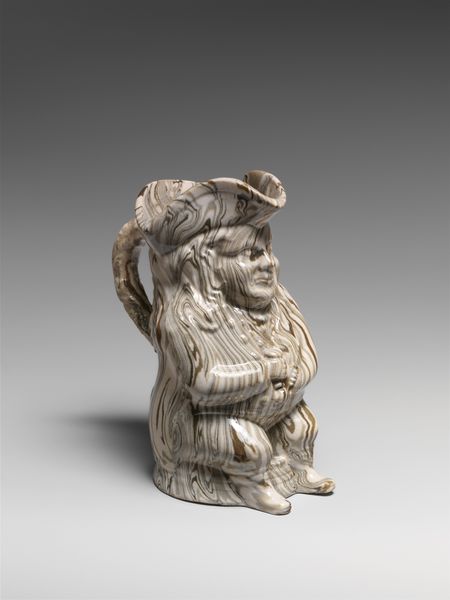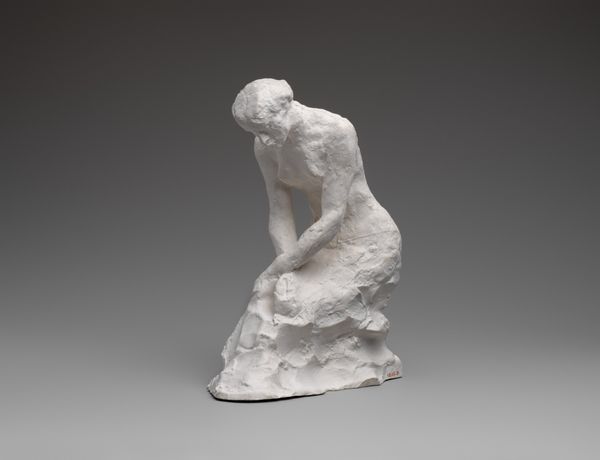
carving, sculpture
#
portrait
#
carving
#
sculpture
#
classical-realism
#
figuration
#
sculpture
Dimensions: height 15 cm, width 12.5 cm, depth 9 cm
Copyright: Rijks Museum: Open Domain
Curator: Welcome. Before us is "Moeder met kind," or "Mother with Child," a sculpture attributed to Eugène Lacomblé, crafted sometime between 1800 and 1950. Editor: There’s a tenderness despite the roughness of the carving. It’s simple but incredibly affecting, capturing an intimate moment. I immediately sense the weight of care and love conveyed through what appears to be stone. Curator: Indeed. Considering it's a sculpture, it's crucial to think about Lacomblé’s artistic process: the specific tools he used, where he might have sourced the material, the stages of carving, and what kind of workshop or environment would have supported his craft. Also, given the potential timeframe, what were the prevailing sculpting methods during the era? Editor: And what does motherhood, this enduring trope in art history, mean during that extended period? Is this a representation of idealized womanhood versus the reality faced by women grappling with issues of race, class, and access to resources. The sculpture embodies something universal, the maternal bond. Still, what narratives are privileged here, and what ones remain untold? The baby looks northern european--whose story is this sculpture truly telling? Curator: Precisely. Furthermore, it appears to be classical-realism, but let’s look closer at how that material—the stone—informs this work. How does it contrast with, say, bronze casting that became common during those same periods? Editor: Also, by positioning it in the tradition of classical-realism, are we subtly reinforcing particular notions about beauty, value, and artistry? It’s important to understand what's being emphasized but also what might be deliberately—or even unconsciously—excluded by these categorization methods. Curator: Agreed. And this invites a whole raft of questions about the work's cultural reception and historical context. Consider the original cost to its owners or, alternately, how readily they acquired these artworks compared to individuals of the working classes. Editor: Thinking about its life and journeys through the market opens up all kinds of potential discussions about the politics of display, wealth and even collecting itself. To view this beautiful sculpture is to think of the unrecorded stories too. Curator: A vital point. Thinking about process, materiality, social status of artwork and art audiences leads to asking vital questions to the context and historical interpretation about an artwork Editor: This image pushes beyond mere visual appeal, it speaks to interconnected histories and silences, reminding me that truly ‘seeing’ demands acknowledging art’s intricate involvement in our shared past and, consequently, our present realities.
Comments
No comments
Be the first to comment and join the conversation on the ultimate creative platform.
